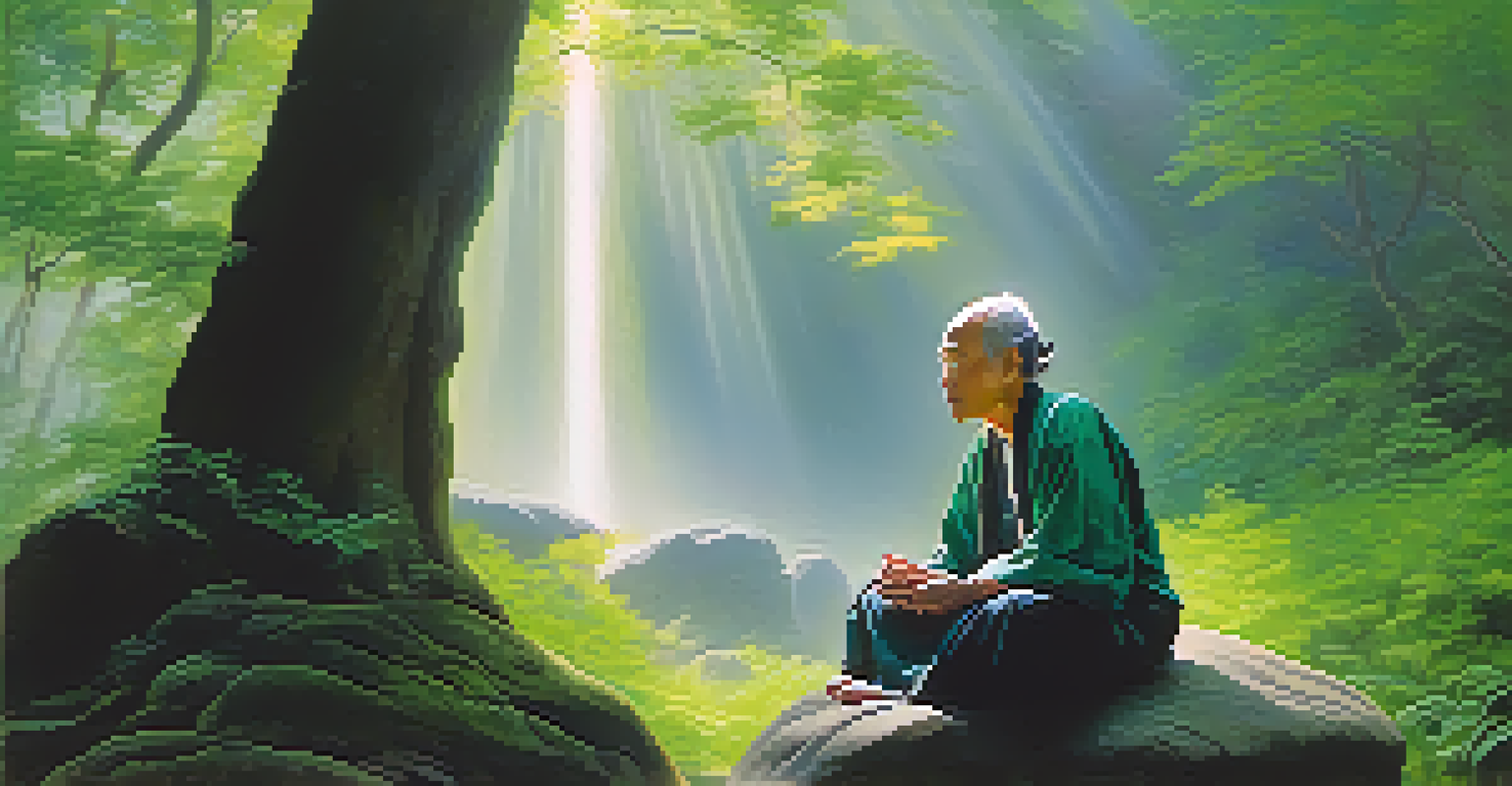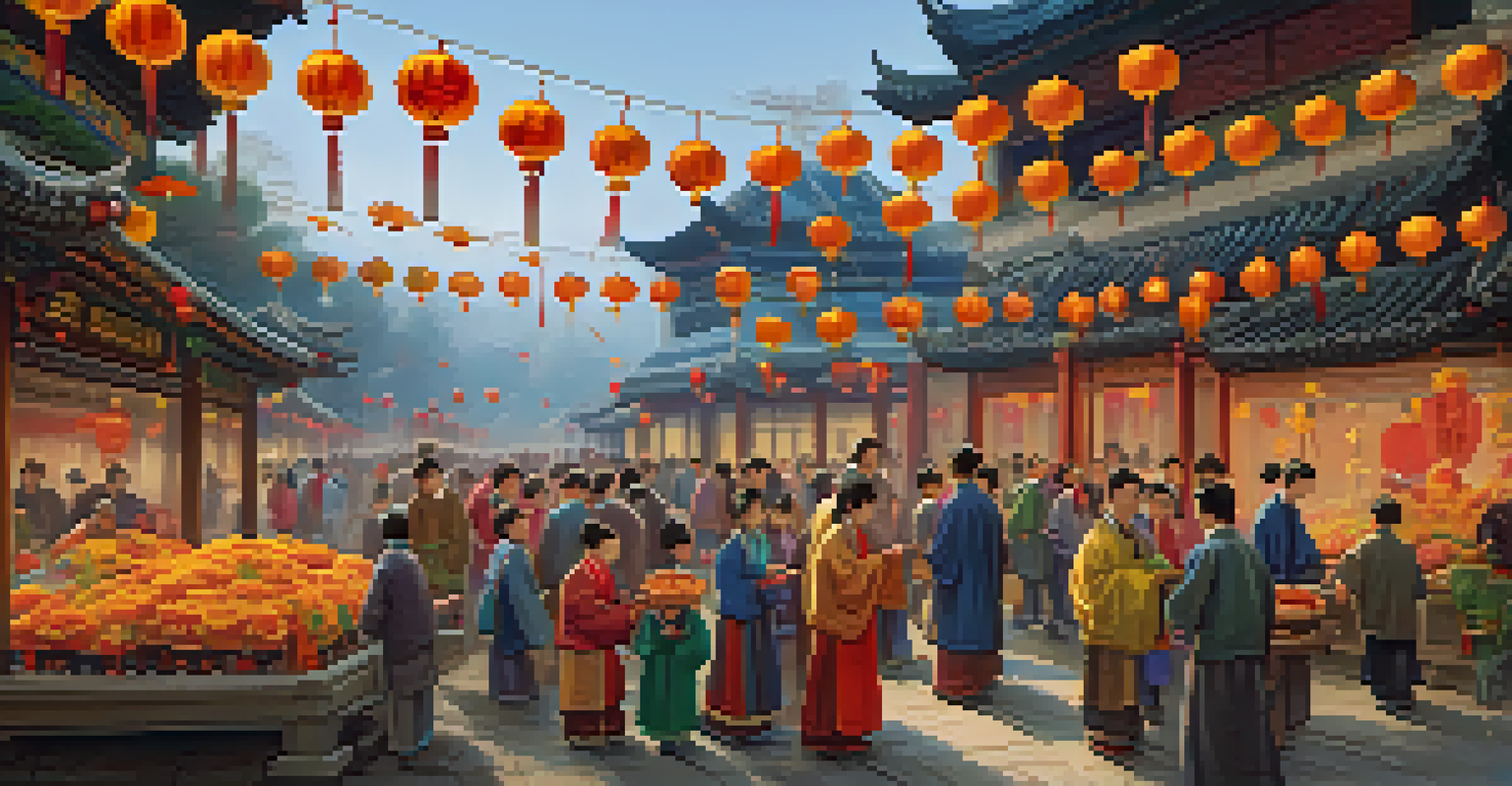The Influence of Taoism on Chinese Spiritual Practices

Understanding the Basics of Taoism and Its Origins
Taoism, or Daoism, is a philosophical and spiritual tradition that originated in China around the 4th century BCE. It emphasizes living in harmony with the Tao, which translates to 'the Way'—a fundamental principle that underlies the universe. This concept encourages individuals to embrace simplicity, spontaneity, and compassion in their lives.
Knowing others is intelligence; knowing yourself is true wisdom. Mastering others is strength; mastering yourself is true power.
The foundational text of Taoism, the Tao Te Ching, written by Laozi, outlines these key principles and has influenced countless spiritual practices throughout Chinese history. This text serves as a guide not just for personal conduct, but also for understanding the natural world and one's place within it.
In essence, Taoism teaches that by aligning oneself with the Tao, individuals can achieve balance and harmony, leading to a more fulfilling spiritual life. This foundation has paved the way for various expressions of spirituality in China.
Taoism's Role in Chinese Folk Religions
Chinese folk religions are deeply intertwined with Taoist beliefs, integrating rituals, deities, and ancestor worship into their practices. Many of these traditions are rooted in the idea of living harmoniously with the forces of nature, a core tenet of Taoism. Festivals, offerings, and communal gatherings often reflect this connection, celebrating life cycles and natural phenomena.

For instance, during the Qingming Festival, families honor their ancestors by cleaning graves and making offerings, showcasing the Taoist belief in the interconnectedness of life and death. This practice not only honors lineage but also reinforces the idea of returning to one's roots and maintaining harmony within the family unit.
Taoism Promotes Harmony with Nature
Taoism emphasizes living in alignment with the Tao, encouraging respect for nature and interconnectedness in life.
Overall, Taoism enriches Chinese folk religions by providing a philosophical framework that emphasizes respect for nature and the importance of community, creating a vibrant tapestry of spiritual practices.
The Influence of Taoism on Traditional Chinese Medicine
Traditional Chinese Medicine (TCM) is heavily influenced by Taoist principles, particularly the concept of Qi (or Chi), which refers to the vital energy that flows through all living things. TCM practitioners believe that health is achieved by balancing this energy within the body, aligning closely with the Taoist view of harmony and balance.
Nature does not hurry, yet everything is accomplished.
Practices such as acupuncture, herbal medicine, and Tai Chi are rooted in the understanding that physical health is interconnected with mental and spiritual well-being. For example, Tai Chi is not just a form of exercise; it's a meditative practice that cultivates Qi, promoting relaxation and inner peace.
Taoism’s holistic approach to health underscores the belief that true wellness involves nurturing the body, mind, and spirit, making it an integral part of Chinese spiritual culture.
Meditation and Mindfulness in Taoist Practices
Meditation is a cornerstone of Taoist practice, aimed at calming the mind and connecting with the Tao. Through techniques such as Zuòwàng (sitting and forgetting), practitioners learn to release distractions and attain a state of tranquility. This form of meditation encourages individuals to embrace the present moment, fostering a deeper understanding of oneself and the universe.
Mindfulness in Taoism extends beyond meditation; it involves a way of living that encourages awareness of one’s thoughts, actions, and their impact on the world. By practicing mindfulness, individuals can cultivate a sense of peace and clarity, crucial for navigating life's complexities.
Influence on Health Practices
Taoism’s principles, particularly the concept of Qi, significantly shape Traditional Chinese Medicine and holistic health practices.
Ultimately, Taoist meditation and mindfulness serve as tools for personal growth and spiritual awakening, helping individuals align with the natural rhythms of life and find inner harmony.
The Interplay Between Taoism and Buddhism in China
The interaction between Taoism and Buddhism has significantly shaped spiritual practices in China. While both traditions offer unique insights, they share common goals of seeking harmony and understanding the nature of existence. This blending of philosophies has resulted in a rich spiritual landscape where followers can draw from both traditions.
For example, Chan Buddhism (Zen Buddhism) incorporates Taoist ideas of spontaneity and naturalness, emphasizing a direct experience of reality. This cross-pollination has led to practices that encourage meditation and mindfulness, allowing individuals to explore their spirituality in diverse ways.
This interplay enriches the spiritual experience for many practitioners, enabling them to adopt a more holistic approach to their beliefs and practices, thus fostering greater harmony within themselves and their communities.
Taoism's Impact on Chinese Art and Literature
Taoism has profoundly influenced Chinese art and literature, inspiring countless works that reflect its core themes of nature, simplicity, and the quest for harmony. Artists often draw upon Taoist concepts, depicting serene landscapes that evoke feelings of tranquility and connection to the natural world.
In literature, Taoist philosophy permeates poetry and prose, with writers like Laozi and Zhuangzi using metaphor and allegory to explore profound existential questions. Their works encourage readers to contemplate the nature of reality and the importance of living in accordance with the Tao.
Taoism Enriches Art and Literature
The themes of nature and simplicity in Taoism inspire a rich legacy in Chinese art and literature, promoting contemplation and peace.
Through these artistic expressions, Taoism continues to resonate, inviting individuals to reflect on their relationship with the world and fostering a sense of peace and understanding in a chaotic environment.
Modern Interpretations of Taoism in Contemporary Spirituality
In today’s fast-paced world, many are turning to Taoism for guidance in navigating stress and finding balance. Contemporary interpretations of Taoist principles often emphasize mindfulness, sustainability, and holistic living, appealing to those seeking a deeper connection with themselves and their environment.
Various modern practices, such as yoga and eco-spirituality, draw inspiration from Taoist ideas, encouraging individuals to reconnect with nature and cultivate inner peace. This resurgence of interest reflects a broader shift towards valuing simplicity and authenticity in one’s life.

As people explore these modern interpretations, Taoism's timeless wisdom continues to inspire a new generation, helping them forge meaningful spiritual paths that resonate with their personal experiences.